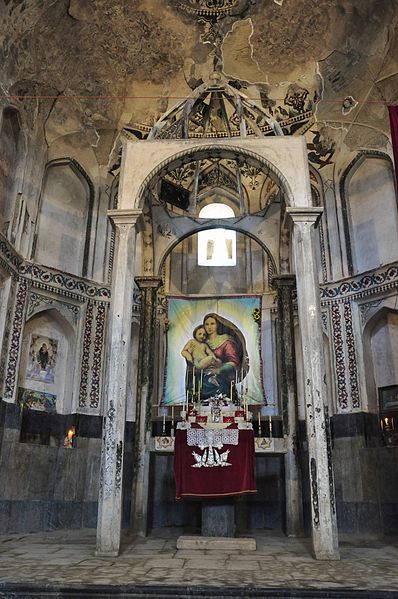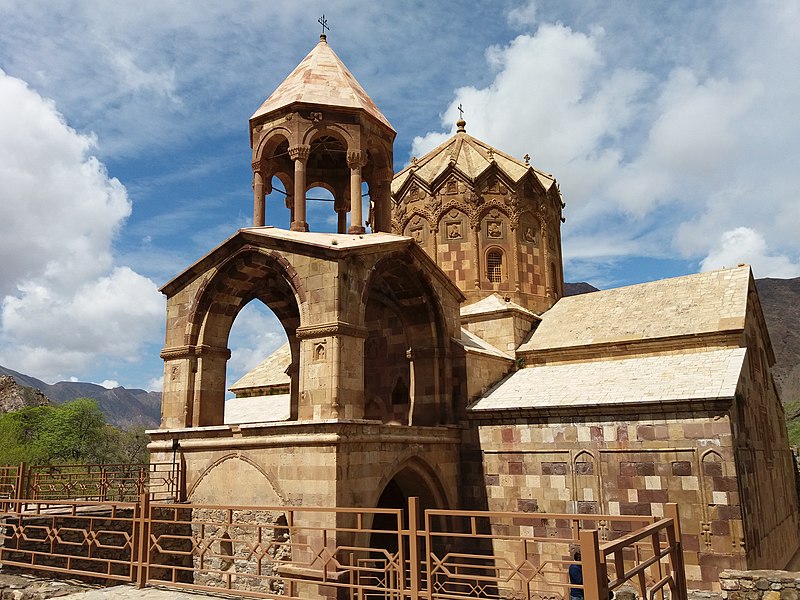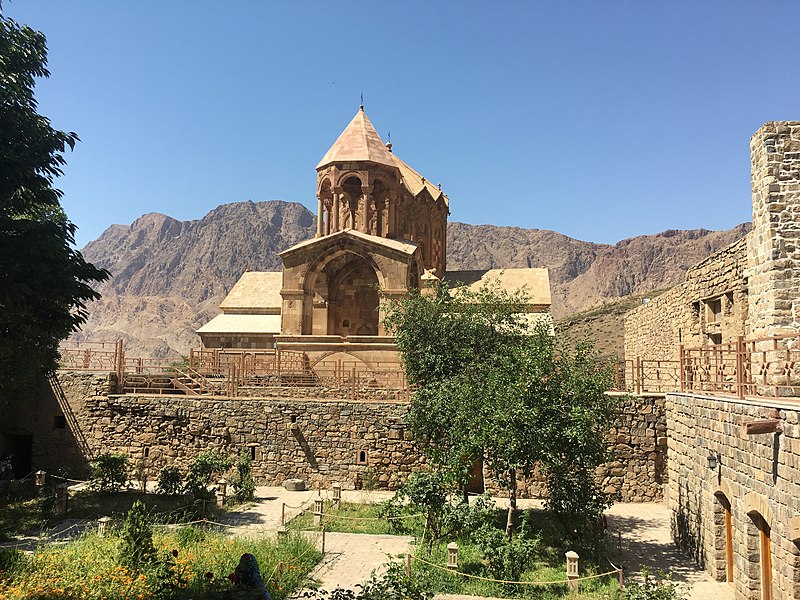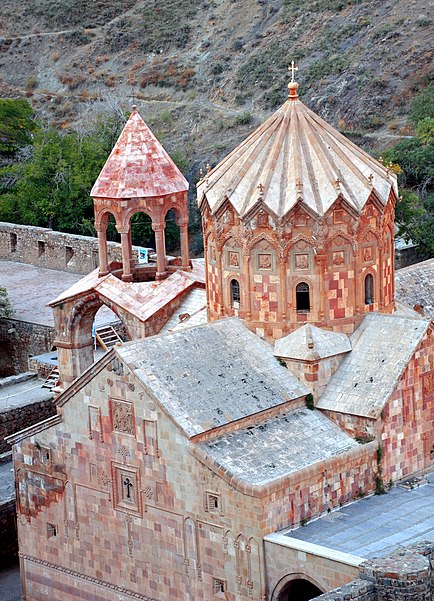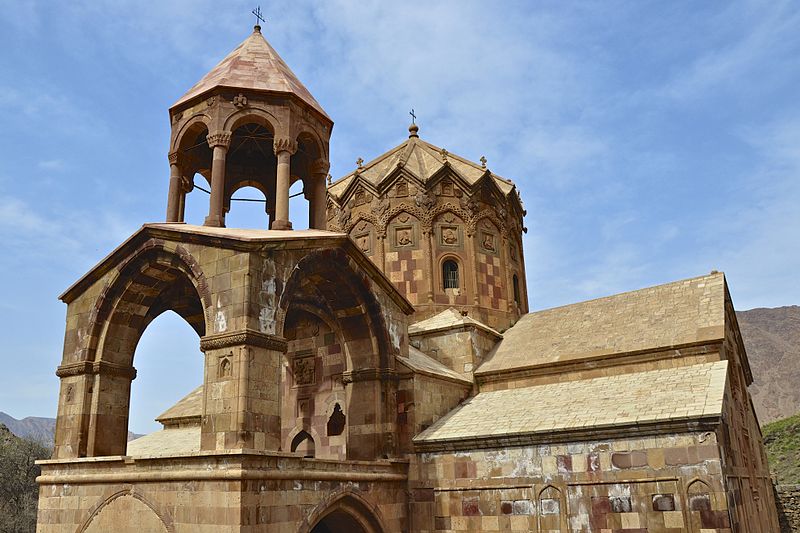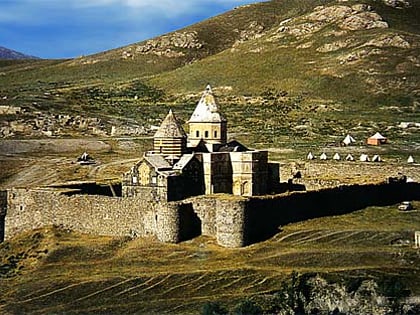Saint Stepanos Monastery
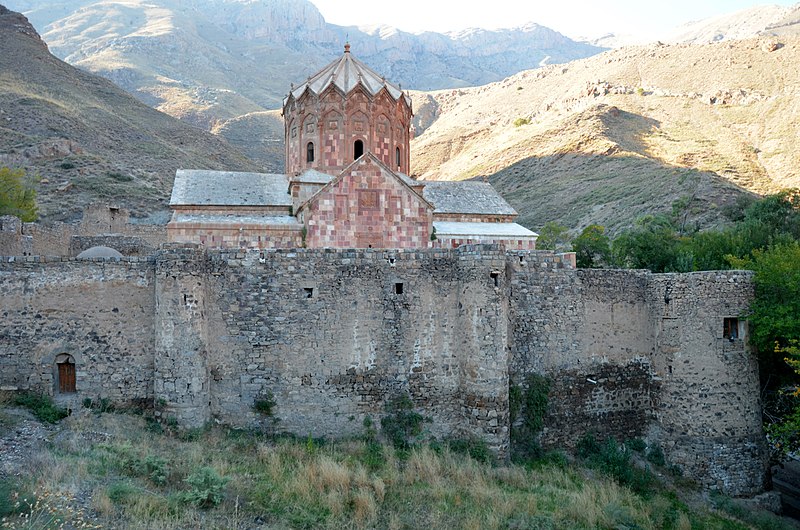
Facts and practical information
Nestled within the mountainous landscape of Iran's East Azerbaijan Province, the Saint Stepanos Monastery stands as a testament to the country's rich religious tapestry and architectural heritage. This ancient monastery, a UNESCO World Heritage Site since 2008, is one of the most significant historical structures within the region.
Constructed in the 9th century, the Saint Stepanos Monastery, also known as the Maghardavank, has withstood the test of time, enduring numerous renovations and reconstructions over the centuries. Its current form dates back to the Safavid period, showcasing the intricate blend of Armenian and Persian architectural styles.
The monastery's remote location near the Aras River, close to the borders of Armenia and Azerbaijan, adds to its mystique and allure. Surrounded by verdant valleys and rugged cliffs, it is accessible via a winding road that climbs through the scenic landscape, offering visitors a truly immersive experience.
As a place of worship and pilgrimage, the monastery complex includes a main church, a chapel, a bell tower, and several well-preserved frescoes and carvings that depict religious scenes and figures. The harmonious integration of the buildings with the natural environment creates a serene atmosphere that captivates both the faithful and the curious traveler.
26 km from JolfaJolfa West Azarbaijan
Saint Stepanos Monastery – popular in the area (distance from the attraction)
Nearby attractions include: Armenian Monastic Ensembles of Iran.


